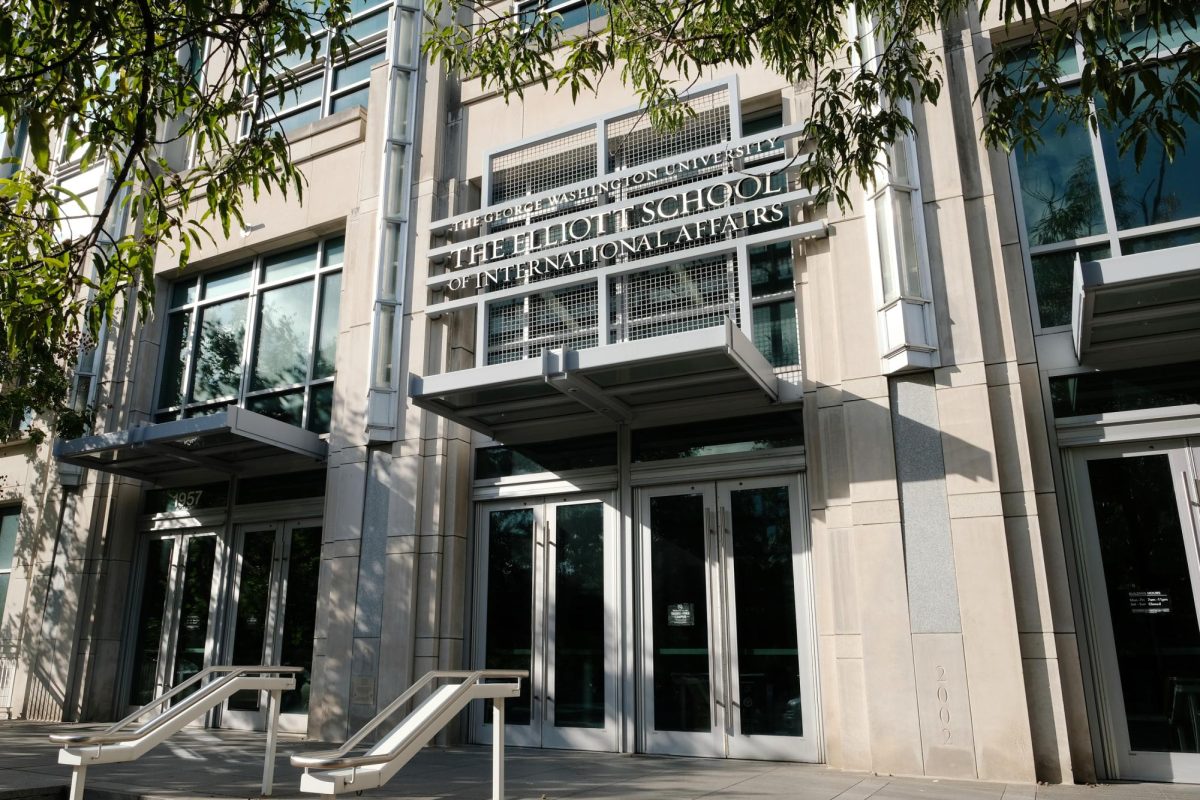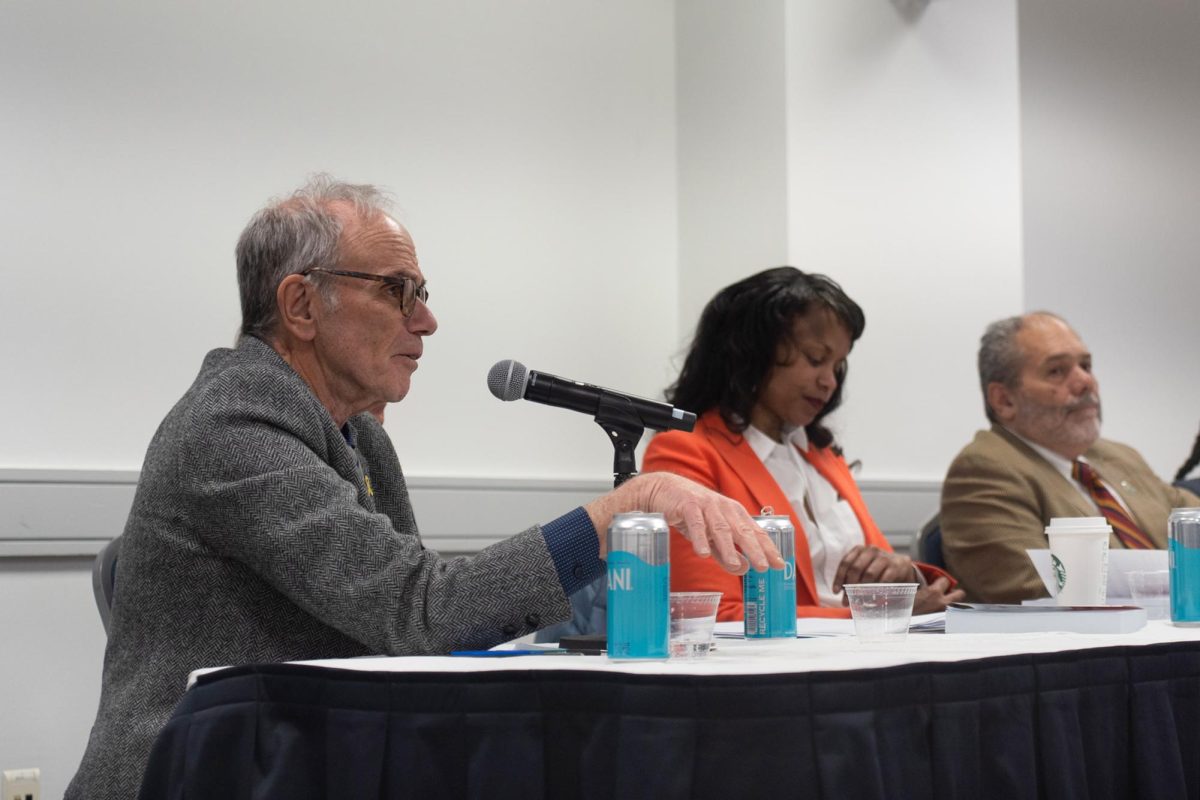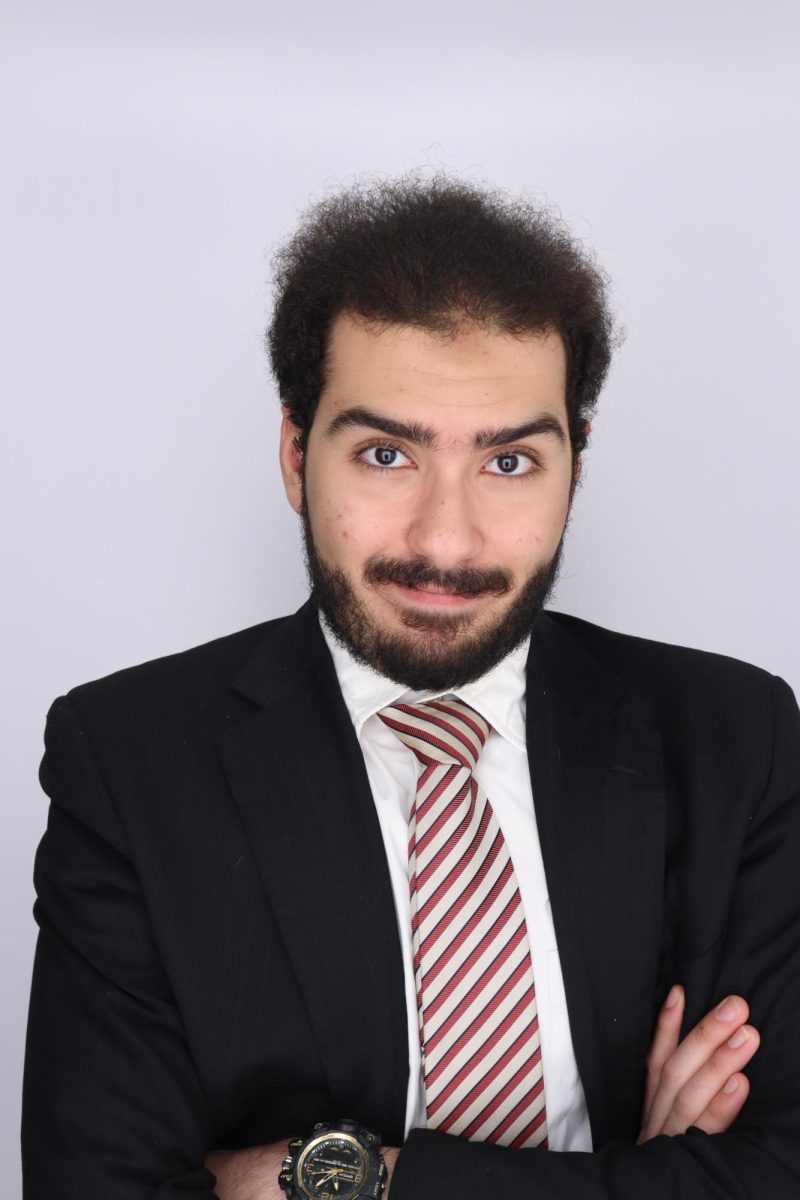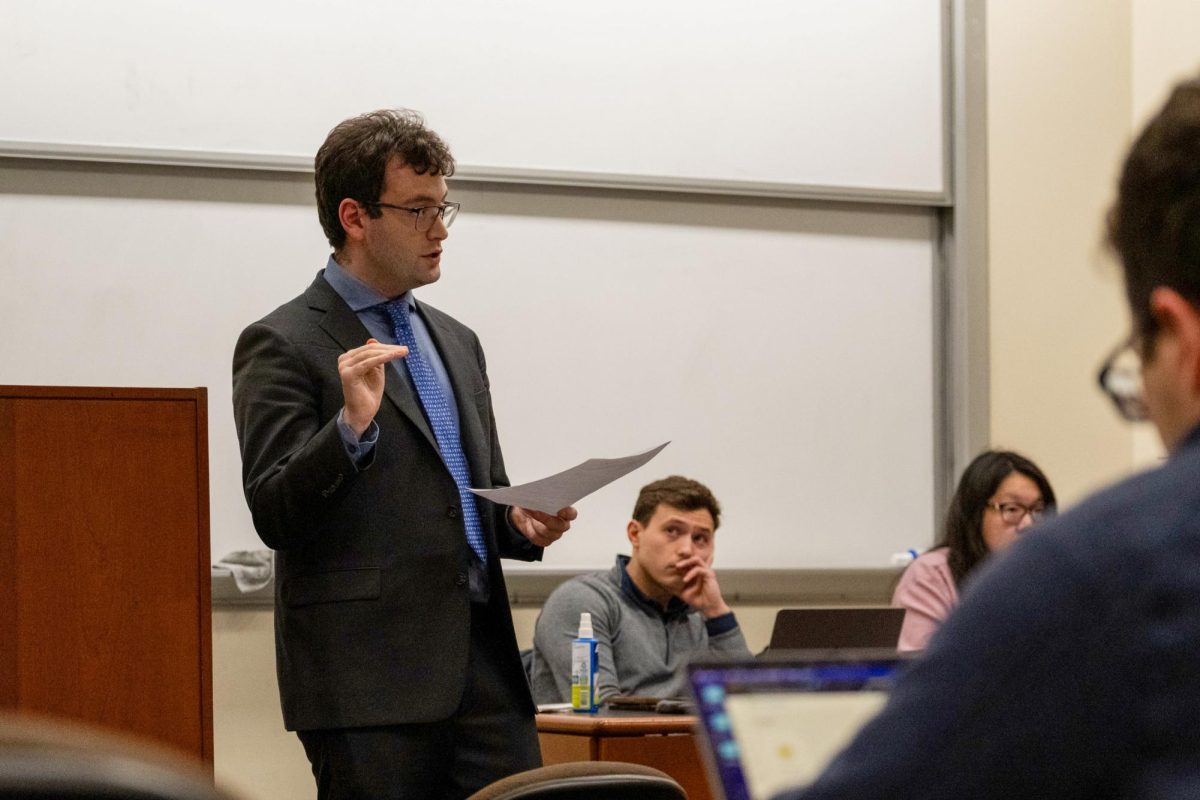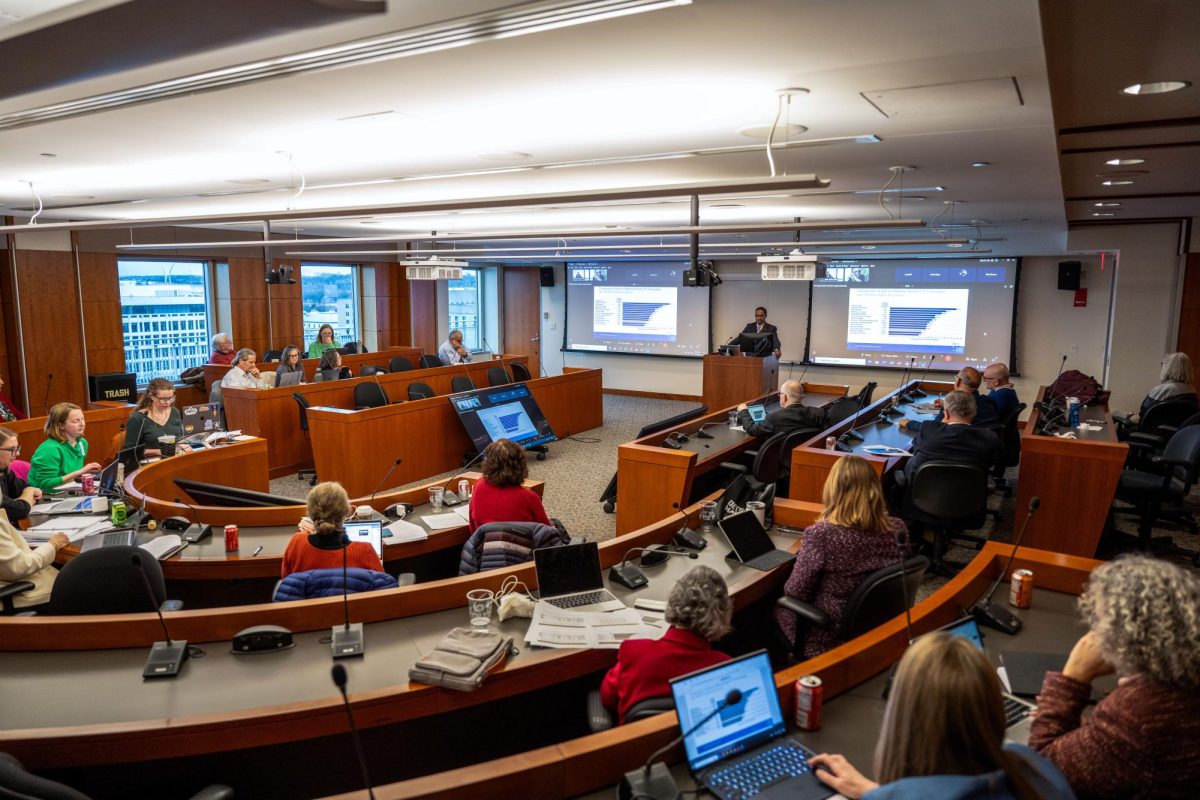A doctoral candidate presented his research on the emergence of QAnon, a far-right conspiracy theory movement, at the Elliott School of International Affairs last Wednesday.
Dusan Bozalka, a doctoral candidate at the Université Paris-Panthéon-Assas discussed his ongoing research on how QAnon influencers spread conspiracy narratives in digital chat rooms, and how narratives can amplify Russian disinformation by translating them into different languages. Marlene Laruelle — the director of GW’s illiberalism study program — moderated the discussion, which was organized by the Institute for European, Russian, and Eurasian Studies at GW.
“It’s a topic that is pretty dear to us at the liberalism study program, but also at the Russian program where we look at Russian influences and connection,” Larauelle said.
Bozalka described QAnon as a far-right political conspiracy theory movement that began in 2017 on 4chan, an anonymous online message board. He said the theory revolves around false claims made by an anonymous figure or figures known as “Q,” along with their followers, referred to as “Anons.” He said these claims have been communicated and expanded on by various online communities and influencers.
“Basically what the dynamic ended up being was in this asymmetric relationship between Q posting the drops, and the Anons, his followers on 4chan, sort of deciphering what he was trying to convey,” Bozalka said.
4chan is known for discussing a wide range of topics, including video games, television, literature, anime & manga, music, cooking, politics and sports. 4chan is one of the Internet’s most trafficked sites and has millions of users, according to The New York Times.
Bozalka said Q conveyed various narratives, starting with the base idea that the world was in crisis and it needed saving. He said what makes this case unique is that Q was only able to get so big and hold such credibility because he was operating on a site like 4chan.
“Q could only exist thanks to 4chan because this gave him credibility,” Bozalka said.
He said the forum is somewhat difficult to navigate, so the conspirators reason that only a qualified informant could be behind this.
Bozalka said what started as a faction among Former President Trump’s supporters on obscure sites like 4chan has become more mainstream, spreading across other larger platforms. Trump himself has been known to spread QAnon theories and often reposts accounts on social media that post about QAnon related topics.
He said since QAnon’s inception in 2017, the movement has expanded to dedicated spaces on Facebook, YouTube, and X. He said when banned from these sites, Anons shifted to alternatives like Telegram, Odysee, Parler, Gettr and TruthSocial.
Bozalka said he is confident the original man behind Q is Paul Furber, a moderator on 4chan who was thus able to assure his drops were noticed, followed by the Watkins, an American father-son duo based in the Philippines. Furber’s knowledge of 4chan’s sub-communities incriminated him, while the Watkins took control after hacking the original Q account, shifting its messaging to be more pro-Trump.
“Q relied heavily on any controversy that was being brought up in the media, because his audience, the anons, requested him to produce conspiracy narratives,” he said. “So then we started getting the idea that Q acts sort of as a proto-influencer, because he wanted to maintain his stronghold on the anons, and thus had to produce and respond to the content production that the Anons wanted.”
Bozalka said following the COVID-19 pandemic many anonymous sources published content in French, Italian, German, Japanese and Portuguese. He said 4chan users were adept at leveraging platform features for disinformation, manipulating them to spread targeted narratives. For example, some users coordinated retweets to intentionally make content trend on Twitter.
“We’re seeing different conspiracy influencers according to the language that they produce content in being widely shared,” he said. “We are also seeing embassies that are tied to the Russian government, etc.”
He said Russia’s invasion of Ukraine led conspiracy influencers to increasingly promote pro-Kremlin narratives to maintain their audience and social capital. They produced content related to the invasion, often using older articles to blend propaganda with conspiracy theories.
“It’s sort of a radicalization through pro-Kremlin narratives following the invasion of Ukraine,” he said.
Bozalka said mainstream coverage of QAnon like in The New York Times and Tucker Carlson’s discussion of the Russian accusation of the biolab narrative, an idea that biological weapons being developed in Ukraine with the help of the U.S. government, on Fox News enhanced the credibility of these conspiracies and prompted conspiracy influencers to produce more Kremlin-aligned content.
He said these conspirators profit off of these narratives and something must be done to target disinformation and fix construing narratives.
“If we want to fight conspiracy narratives, this has to be a transnational effort, just like how the narratives are spread,” he said.


